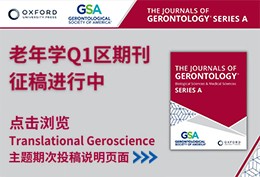-
Smithian growth in the little divergence: a general equilibrium analysis Explor. Econ. Hist. (IF 2.6) Pub Date : 2025-04-02
David Chilosi, Carlo CiccarelliTo address growing concerns on the representativeness of real wages, we generate new estimates of GDP pc in pre-industrial England and Italy, as well as new exploratory estimates for Belgium, Finland, France, Germany, the Netherlands, Portugal, Poland, Spain and Sweden, with Groth and Persson's (2016) general equilibrium model. Our results question the robustness of the current theoretical consensus
-
Monetary policy at the periphery during the Classical Gold Standard: Italy (1894–1913) Explor. Econ. Hist. (IF 2.6) Pub Date : 2025-04-01
Paolo Di Martino, Fabio C. BaglianoThis paper analyzes monetary policy in Italy between 1894 and WWI by focusing on the main bank of issue at the time (the Banca d’Italia, BdI) and the Treasury. We show that the Treasury set multiple official rates, and the BdI determined an ”effective” rate transmitted to the market by discounting different bills to the various rates; we provide an original measure of this rate based on primary sources
-
The world’s first global safe asset: British public debt, 1718-1913 Explor. Econ. Hist. (IF 2.6) Pub Date : 2025-03-19
Patricia Gomez-Gonzalez, Gabriel MathyThis study assesses whether British public debt featured a convenience yield during the Classical Gold Standard before World War I, as the US does in modern times. The empirical results support this thesis. Increases in the British debt-to-GDP ratio decreased the convenience yield on British public debt by between 8 and 20 basis points, qualitatively similar to the behavior of US public debt yields
-
Do local conditions determine the direction of science? Evidence from U.S. land grant colleges Explor. Econ. Hist. (IF 2.6) Pub Date : 2025-03-14
Michael J. Andrews, Alexa SmithWe quantify the extent to which land grant colleges were located in counties that grow different crops than the rest of their states, which we call agricultural unrepresentativeness. We find that land grant colleges located in agriculturally unrepresentative counties tended to produce research focusing on more unrepresentative crops. We find similar results when exploiting historical college site selection
-
-
Fertility and mortality responses to short-term economic stress: Evidence from two Hungarian sample populations, 1819-1914 Explor. Econ. Hist. (IF 2.6) Pub Date : 2025-03-07
Péter Őri, Levente PakotDemographic response to short-term price fluctuations can be interpreted as an indicator of living standards in pre-modern societies. In this paper, we demonstrate how childbearing and infant and child mortality responded to changes in rye prices in two nineteenth-century Hungarian sub-regions. We conducted a micro-level demographic analysis based on family reconstitution data and multivariate statistical
-
The paradox of slave collateral Explor. Econ. Hist. (IF 2.6) Pub Date : 2025-03-02
Rajesh P. Narayanan, Jonathan PritchettAs mobile financial assets, slaves have high liquidation value that makes them desirable as loan collateral. The mobility of slaves also makes them insecure collateral because borrowers could sell slaves to outside buyers or move them beyond the reach of creditors. We contend that creditors balanced the opposing forces of liquidity and security in deciding whether to extend credit against slave collateral
-
Land Inequality and Demographic Outcomes: The Relationship between Access to Land and the Demographic System in 19th-century Rural Tuscany Explor. Econ. Hist. (IF 2.6) Pub Date : 2025-03-01
M. Manfredini, A. Fornasin, M. BreschiIn pre-industrial rural Italy, the disparities among smallholders, sharecroppers, and day laborers were starkly defined by their unequal access to land, which significantly influenced their living standards, family structures, and socioeconomic conditions. This paper uses nominative data from 1819 to 1859 to first explore how the different peasant categories adjusted their demographic behaviors according
-
Economic stress and migration in early modern Japan: Rural-urban comparative evidence from population registers Explor. Econ. Hist. (IF 2.6) Pub Date : 2025-02-15
Satomi KUROSU, Hao DONGThis study investigates the effects of economic stress on out-migration behaviors using individual-level panel data transcribed from local population registers of three villages and a neighboring town in northeastern Japan in 1708–1870. Economic stress under study includes local economic hardship, measured by rice price fluctuations, and large-scale famines. We apply multinomial logistic models to
-
Examining the role of training data for supervised methods of automated record linkage: Lessons for best practice in economic history Explor. Econ. Hist. (IF 2.6) Pub Date : 2025-01-30
James J Feigenbaum, Jonas Helgertz, Joseph PriceDuring the past decade, scholars have produced a vast amount of research using linked historical individual-level data, shaping and changing our understanding of the past. This linked data revolution has been powered by methodological and computational advances, partly focused on supervised machine-learning methods that rely on training data. The importance of obtaining high-quality training data for
-
Balancing economic stress: The role of rural–urban migration in nineteenth-century East Belgium Explor. Econ. Hist. (IF 2.6) Pub Date : 2025-01-27
George C. Alter, Michel OrisIn this paper we propose an integrated view of both the rural and the urban sides of migration in 19th century East Belgium. We study two rural areas, Ardennes and the Pays de Herve, with diverging agrarian structures and pathways to modernization. Both areas faced the challenge of population pressure due to high fertility and falling mortality. Between them was a textile town, Verviers, which was
-
Gains from factory electrification: Evidence from North Carolina, 1905–1926 Explor. Econ. Hist. (IF 2.6) Pub Date : 2025-01-20
Will DamronBetween 1900 and 1930, the share of power in American manufacturing coming from electricity grew from 10% to 80%. Although electrification has been attributed with dramatic productivity gains, data limitations have constrained previous research to rely on aggregate data. Using a newly-collected dataset covering manufacturers in North Carolina in the early 1900s, I examine the effects of electrification
-
Union wage effects in Sweden: Evidence from the interwar period Explor. Econ. Hist. (IF 2.6) Pub Date : 2025-01-13
William SkoglundIn this paper, I use a new plant-level dataset to investigate the relationship between wages and the regional strength of unions. Using a shift-share or ’Bartik’ instrumental variables approach, I disentangle the causal effect of union strength on wage levels. I find statistically significant and economically substantial, heterogeneous union wage effects for men with the bottom of the distribution
-
The fertility response to price changes in a manorial society: The case of rural Estonia, 1834–1884 Explor. Econ. Hist. (IF 2.6) Pub Date : 2025-01-05
Martin Klesment, Kersti LustIn the pre-industrial era, changing economic conditions had a strong influence on demographic processes. Using pre-industrial rural Estonia as an example, the article studies fertility response to short-term economic stress in a manorial society in eastern Europe. It considers whether the fertility response to rye price fluctuations was deliberate and whether it was socially differentiated. It appears
-
The escape from hunger: The impact of food prices on well-being in Sweden, 1813–1967 Explor. Econ. Hist. (IF 2.6) Pub Date : 2024-12-18
Tommy Bengtsson, Luciana QuarantaThis study analyses how the standard of living for different social groups changed when Sweden developed from an agricultural to an industrial society and when the first steps towards a modern welfare society were taken. As a measure of living standards, we use the ability to overcome short-term economic stress caused by high food prices. We use individual-level longitudinal data from 1813 to 1967
-
The political effects of the 1918 influenza pandemic in Weimar Germany Explor. Econ. Hist. (IF 2.6) Pub Date : 2024-12-18
Stefan Bauernschuster, Matthias Blum, Erik Hornung, Christoph KoenigHow did the 1918 Influenza pandemic affect elections in Weimar Germany? We combine a panel of election results (1893–1933) with spatial heterogeneity in excess flu mortality to assess the pandemic’s effect on voting behavior across constituencies. Applying a dynamic differences-in-differences approach, we find that areas with higher influenza mortality saw a lasting shift towards leftwing parties.
-
Reassessing the great compression among top earners: The overlooked role of taxation and self-employment Explor. Econ. Hist. (IF 2.6) Pub Date : 2024-12-16
Miguel Artola Blanco, Victor Manuel Gómez-BlancoThis paper provides new estimates of wage inequality in the United States from 1918 to 1949, leveraging a novel top-income methodology that integrates both tax records and census data. Our analysis reveals no sustained decline in wage inequality before the Second World War but a marked decrease during the war years. This decline was driven primarily by stagnation among the top 1 % of earners and significant
-
The Aftermath of the February Flood of 1825: Social and Demographic Change in the Krummhörn Region, East Frisia Explor. Econ. Hist. (IF 2.6) Pub Date : 2024-12-15
Kai P. Willführ, Josep Sottile PerezIn February 1825, the dikes broke after a spring tide in the Krummhörn region in East Frisia, Germany, causing a severe disaster. Although the flood did not claim many victims, substantial damage was done to the farmland, and the economic crisis that followed permanently changed the social structure in the Krummhörn. We study family reconstitutions of the region linked to information about socioeconomic
-
World War II service and the GI Bill: New evidence on selection and veterans’ outcomes from linked census records Explor. Econ. Hist. (IF 2.6) Pub Date : 2024-12-13
William J. Collins, Ariell ZimranWe examine new datasets of records linked between the 1940 and 1950 US censuses to characterize selection into military service during World War II and to analyze differences in veterans’ post-war educational and labor market outcomes relative to nonveterans. Motivated by potentially disparate selection into and effects of service, we pay particular attention to groups distinguished by age, pre-war
-
Long-term trends in income and wealth inequality in southern Italy. The Kingdom of Naples (Apulia), sixteenth to eighteenth centuries Explor. Econ. Hist. (IF 2.6) Pub Date : 2024-12-05
Guido Alfani, Sergio SardoneThis paper uses new archival sources to study the long-term tendencies in economic inequality in preindustrial southern Italy (Kingdom of Naples). The paper reconstructs long-term trends in wealth inequality for the period 1550–1800 for a sample of communities in the region Apulia and produces estimates of overall inequality levels across the region. These estimates are compared with those which have
-
Poverty in Germany from the Black Death until the Beginning of Industrialization Explor. Econ. Hist. (IF 2.6) Pub Date : 2024-11-30
Guido Alfani, Victoria Gierok, Felix SchaffThis paper provides macro-level estimates of the prevalence of poverty in preindustrial Germany, from the Black Death to the onset of industrialization in the nineteenth century. Based on a new body of evidence we show that poverty declined after two large-scale catastrophes: the Black Death in the fourteenth century and the Thirty Years’ War in the seventeenth. Poverty increased substantially in the
-
Protestantism and human capital: Evidence from early 20th century Ireland Explor. Econ. Hist. (IF 2.6) Pub Date : 2024-11-30
Alan Fernihough, Stuart HendersonUsing a large individual-level dataset, we explore the significance of religious affiliation for human capital variation in Ireland at the turn of the twentieth century. We construct a large sample based on the returns of male household heads in the 1901 census and explore variation in literacy across the three principal denominations: Roman Catholicism, Anglicanism and Presbyterianism. Protestantism
-
The evolution of the value of water power during the Industrial Revolution Explor. Econ. Hist. (IF 2.6) Pub Date : 2024-11-30
Todd GuilfoosThis work measures the historical evolution of the value of water power during the Industrial Revolution in the United States. I use the variation in county level agricultural land prices and the natural endowment of water power to identify the value of water power. This value is decomposed into direct values (power as a prime mover) and indirect values (attracting infrastructure) from 1850 to 1920;
-
Agglomeration and creativity in early modern Britain Explor. Econ. Hist. (IF 2.6) Pub Date : 2024-11-26
Gary W. Cox, Valentin FigueroaWhen did western cities become the engines of creativity modern theorists envision them to be? We approach this issue by investigating how much elite authors benefited from agglomerating in early modern London. Building a new panel dataset documenting the place of residence and annual publications of 2,026 prolific authors over the period 1482–1800, we conduct longitudinal author-level analyses. Our
-
Who collaborates with the Soviets? Financial distress and technology transfer during the Great Depression Explor. Econ. Hist. (IF 2.6) Pub Date : 2024-11-15
Jerry Jiang, Jacob P. WeberWe provide evidence that financial distress induces firms to sell their technology to foreign competitors. To do so, we construct a novel, spatial panel dataset by individually researching and locating U.S. firms who signed Technology Transfer Agreements (TTAs) with the Soviet Union during the 1920s and 1930s in various U.S. counties. By relating the number of TTAs signed in each county to the number
-
Monumental effects: Confederate monuments in the Post-Reconstruction South Explor. Econ. Hist. (IF 2.6) Pub Date : 2024-10-28
Alexander N. TaylorThis paper explores the contemporaneous effects of Confederate monuments dedicated in the Post-Reconstruction South. I combine monument, election, and census data to create an election-year panel dataset of former Confederate counties between 1878–1912, then exploit the temporally staggered and geographically distributed dedication of monuments using a generalized difference-in-differences design.
-
Elite persistence and inequality in the Danish West Indies, 1760–1914 Explor. Econ. Hist. (IF 2.6) Pub Date : 2024-10-28
Stefania Galli, Dimitrios Theodoridis, Klas RönnbäckThe issue of how elites as a social group form, maintain their position, and influence the society they control is central to the debate on inequality. This paper studies one of the most extremely unequal societies ever recorded — the sugar-based economies in the West Indies — by focusing on the island of St. Croix in the Danish West Indies and examines the emergence and persistence of its economic
-
Speed of convergence in a Malthusian world: Weak or strong homeostasis? Explor. Econ. Hist. (IF 2.6) Pub Date : 2024-10-26
Arnaud DeseauThe Malthusian trap is a well recognized source of stagnation in per capita income prior to industrialization. However, previous studies have found mixed evidence about its exact strength. This article contributes to this ongoing debate by estimating the speed of convergence for a panel of 9 preindustrial European economies over a long period of time (14th–18th century). The analysis relies on a calibrated
-
Incredible commitment: Influence accumulation, consensus-making, and the collapse of the Polish-Lithuanian Commonwealth Explor. Econ. Hist. (IF 2.6) Pub Date : 2024-10-17
Mikołaj MalinowskiI aim to explain the petrification of the Polish-Lithuanian Commonwealth's parliament due to the veto in the 17th and 18th centuries. I study genealogical data on senatorial ancestors and identify the formation of an oligarchic elite. I propose that the accumulation of influence by powerful individuals undermined their vested interest in the state's continuation. This weakened the elite's ability to
-
The Black–white lifetime earnings gap Explor. Econ. Hist. (IF 2.6) Pub Date : 2024-10-16
Ezra Karger, Anthony WrayThe average white male born in 1900 earned 2.6 times more labor income over their lifetime than the average Black male. This gap is nearly twice as large as the more commonly studied cross-sectional Black–white earnings gap because 48% of Black males born in 1900 died before the age of 30 as compared to just 26% of white males. We calibrate a model of optimal consumption in a world with mortality risk
-
Are some piece rates better than others? Cross-sectional variation in piece rates at a US cotton factory Explor. Econ. Hist. (IF 2.6) Pub Date : 2024-10-13
Joyce BurnetteWhile piece rates were a common form of payment in manufacturing, historians have rarely tried to understand the cross-sectional structure of piece-rate prices. This paper examines piece rates paid to weavers at a US cotton factory and demonstrates that in most cases expected daily earnings were constant across different piece rates. While some rates did result in higher daily earnings, there is no
-
Reservoirs of power: The political legacy of dam construction in Franco’s Spain Explor. Econ. Hist. (IF 2.6) Pub Date : 2024-10-10
Gema Lax-MartinezThis paper delves into infrastructure projects initiated during the dictatorship in Spain, particularly the construction of reservoirs and dams. These projects were instrumental in bolstering support for right-wing factions advocating for Franco’s regime over the years. However, our research reveals a notable trend: areas where dams were erected by the regime demonstrate diminished political backing
-
(In-kind) Wages and labour relations in the Middle Ages: It’s not (all) about the money Explor. Econ. Hist. (IF 2.6) Pub Date : 2024-10-01
Jordan Claridge, Vincent Delabastita, Spike GibbsThis paper explores the prevalence of in-kind wages in medieval labour markets and the underlying reasons for their use. Using a new dataset of agricultural labourers in medieval England, we demonstrate that, until the late fourteenth century, wages were recorded anonymously and most remuneration was done through in-kind payment. From the 1370s, however, labour remuneration shifted increasingly to
-
Wealth and history: A reappraisal Explor. Econ. Hist. (IF 2.6) Pub Date : 2024-09-27
Daniel WaldenströmThe study revisits trends and drivers of wealth inequality and accumulation since the onset of industrialization. Empirical analysis reveals that Western countries are both wealthier and more equal today than a century ago. Wealth concentration has declined in all countries over the past century, remaining at historically low levels in Europe, while rising in the United States. These trends are largely
-
Family first: Defining, constructing, and applying historical patent families Explor. Econ. Hist. (IF 2.6) Pub Date : 2024-09-26
David E. Andersson, Matti La Mela, Fredrik TellThe article presents a novel method that enables the formation of historical patent families. Patent families are useful for studying the value of inventions and identifying key technologies, as they indicate geographic diffusion and higher patenting costs. The concept of patent family has not been employed in historical contexts as historical sources generally lack information about priority rights
-
Access to kin, economic stress, and late-life mortality in North Orkney, Scotland, 1851–1911 Explor. Econ. Hist. (IF 2.6) Pub Date : 2024-09-18
Julia A. JenningsThis paper analyzes the effects of kin availability and short-term economic stress on mortality among older adults in North Orkney, Scotland in the mid-19th through early 20th century. The mortality of those aged 60+ is associated with high oatmeal prices lagged by one year, a delayed effect that may suggest that buffering mechanisms are less effective in the longer term or that relative to younger
-
Skill, race, and wage inequality in British Tanganyika Explor. Econ. Hist. (IF 2.6) Pub Date : 2024-09-16
Sascha KlockeHigh racial disparities between Europeans and Africans and high skill premiums are recurrent themes in the literature on inequality in colonial Africa. However, their determinants and effects on inequality remain underexplored. This paper investigates wage inequality, skill premiums, and racial discrimination in British Tanganyika from c. 1920 to 1960. It provides first estimates for wage inequality
-
Colonial legacies and wealth inequality in Kenya Explor. Econ. Hist. (IF 2.6) Pub Date : 2024-09-11
Rebecca SimsonThis article discusses the evolution of Kenya's wealth distribution from the late 1950s to the present. Utilizing previously untapped probate and administration sources, it measures the share of Kenyans leaving estates at death, and maps how this wealth-owning strata has changed over time. It shows a growth in African estates after independence, and by the 1980s roughly 8 % of Kenyans left estates
-
Corporations and partnerships: Factory productivity in late Imperial Russia Explor. Econ. Hist. (IF 2.6) Pub Date : 2024-08-31
Nikita LychakovUsing factory-level data from an official manufacturing census, I examine productivity among two forms of enterprise in the Russian Empire from around 1908. I find that despite having 60 times more financial capital, factories owned by corporations did not outperform those owned by ordinary and limited partnerships. Although corporations were more mechanized per worker, both enterprise forms attained
-
Ethnic wealth inequality in England and Wales, 1858–2018 Explor. Econ. Hist. (IF 2.6) Pub Date : 2024-08-30
Neil CumminsUsing surnames from the universe of death and wealth-at-death records in England and Wales, from 1858 to 2018, I document the emergence of a modern ethnic wealth gradient. Historically, Non-British ethnicities have average wealth 2–5 times that of the English. However, this premium has decreased over the 20th century. By 1980, non-British ethnicities have no advantage over the British. However, this
-
Fertility responses to short-term economic stress: Price volatility and wealth shocks in a pre-transitional settler colony Explor. Econ. Hist. (IF 2.6) Pub Date : 2024-08-16
Jeanne Cilliers, Martine Mariotti, Igor MartinsThis paper examines the effects of short-term economic stress, captured by general price volatility and a negative wealth shock on short-run fertility behavior in the rural pre-transitional society of the Cape Colony. First, we link complete birth histories of settler women from the South African Families database to consumer price index data to examine the effect of price volatility on conceptions
-
Bank failures and economic activity: Evidence from the Progressive Era Explor. Econ. Hist. (IF 2.6) Pub Date : 2024-07-28
Marco del Angel, Gary Richardson, Michael GouDuring the Progressive Era (1900–29), economic growth was rapid but volatile. Boom and busts witnessed the formation and failure of tens of thousands of firms and thousands of banks. This essay uses new data and methods to identify causal links between failures of banks and bankruptcies of firms. Our analysis indicates that bank failures triggered bankruptcies of firms that depended upon banks for
-
Print culture and economic constraints: A quantitative analysis of book prices in eighteenth-century Britain Explor. Econ. Hist. (IF 2.6) Pub Date : 2024-07-15
Iiro Tiihonen, Leo Lahti, Mikko TolonenWho could afford books in the late early-modern period? We explore how prices related to the demand for books in eighteenth-century Britain by analysing extensive bibliographic and socio-economic data based on Bayesian statistics and machine learning. Our results quantify in financial terms the difficulty of buying print products faced by most British households in the eighteenth century, and how this
-
Did the 1917–21 economic depression accelerate the epidemiological transition? Milk prices, summer peak of mortality, and food-and-water causes of death in Madrid, Spain Explor. Econ. Hist. (IF 2.6) Pub Date : 2024-07-06
Michel Oris, Stanislao Mazzoni, Diego Ramiro-FariñasThis article aims to answer a provocative question: would higher prices, particularly that of milk, be beneficial for the survival of children under 2 years old? Using a database of more than 230,000 births, matched to deaths, we test this hypothesis in the context of a large Mediterranean city, Madrid, in the years 1915–1926. During this period an inflationary crisis spread from 1917 to 1921. We compare
-
European business cycles and economic growth, 1300–2000 Explor. Econ. Hist. (IF 2.6) Pub Date : 2024-06-22
Stephen Broadberry, Jason LennardThe modern business cycle features long expansions combined with short recessions, and is thus related to the emergence of sustained economic growth. It also features significant international co-movement, and is therefore associated with growing market integration and globalisation. When did these patterns first appear? This paper explores the changing nature of the business cycle using historical
-
Banking on innovation: Listed and non-listed equity investing, evidence from société générale de Belgique, 1850–1934 Explor. Econ. Hist. (IF 2.6) Pub Date : 2024-05-27
Gertjan Verdickt, Marc DeloofSociété Générale de Belgique was the world's first universal bank. It pioneered another innovation: investing in non-listed equity. We use hand-collected data to show that the bank earned significant positive risk-adjusted returns from 1850 to 1934. This offset its flat return on the listed equity portfolio and underperforming bond portfolio. Other Belgian universal banks followed this strategy. As
-
How rich were the rich? An empirically-based taxonomy of pre-industrial bases of wealth Explor. Econ. Hist. (IF 2.6) Pub Date : 2024-05-03
Branko MilanovicThe paper uses fifty-three social tables, ranging from Greece in 330 BCE to Mexico in 1940 to estimate the share and level of income of the top 1 % in pre-industrial societies. The share of the top 1 % covers a vast range from around 10 % to more than 40 % of society's income and does not always move together with the estimated Gini coefficient and the Inequality Extraction Ratio. I provide a taxonomy
-
Courts, legislatures, and evolving property rules: Lessons from eminent domain Explor. Econ. Hist. (IF 2.6) Pub Date : 2024-03-14
Robert K. Fleck, F. Andrew HanssenThis paper examines judicial and legislative modifications to a specific property rule, the benefit offset, which was widely employed by railroad companies during the 19th century as a way to reduce required compensation for land taken through eminent domain. At the beginning of the railroad boom, all states allowed the benefit offset; by the end of the boom, most states had banned it, some via court
-
Contagion of fear: Panics, money, and the Great Depression Explor. Econ. Hist. (IF 2.6) Pub Date : 2024-03-12
Fabrizio Almeida Marodin, Kris James Mitchener, Gary RichardsonDespite its centrality in debates about the causes and consequences of the Great Depression, banking panics’ impact on the money supply during this period remains a subject of ongoing debate. Before 1936, the Fed's decentralized structure meant that panics impacted money creation regionally while monetary impulses impacted bank stability nationally. We use this structure and newly digitized data to
-
The Customary Atlas of Ancien Régime France Explor. Econ. Hist. (IF 2.6) Pub Date : 2024-03-12
Victor Gay, Paula E. Gobbi, Marc GoñiCustomary law governed most European societies during the Middle Ages and early modern period. To better understand the roots of legal customs and their implications for long-run development, we introduce an atlas of customary regions of Ancien Régime France. We also describe the historical origins of French customs, their role as a source of law, and their legal content. We then offer some insights
-
Does time heal all wounds? The rise, decline, and long-term impact of forced labor in Spanish America Explor. Econ. Hist. (IF 2.6) Pub Date : 2024-03-05
Leticia Arroyo Abad, Noel MaurerFor most of human history, free wage labor was uncommon compared to various coercive institutions based on the threat of force. Latin America was no exception to this general rule. A number of scholars argue that past coercive labor institutions explain regional and national divergence within Latin America long after the institutions themselves have disappeared. A review of the literature, however
-
Linked samples and measurement error in historical US census data Explor. Econ. Hist. (IF 2.6) Pub Date : 2024-02-03
Sam Il Myoung Hwang, Munir SquiresThe quality of historical US census data is critical to the performance of linking algorithms. We use genealogical profiles to correct measurement error in census names and ages. Our findings suggest that one in every two records has an error in name or age, and human capital is correlated with lower error rates. While errors in age decline across subsequent census rounds from 1850 to 1930, errors
-
-
Monopsony power in the United States: Evidence from the great depression Explor. Econ. Hist. (IF 2.6) Pub Date : 2023-12-30
Andrew Chase HoltThis paper presents evidence that firms had labor market power during the early 1930s. Using plant-level data from the Census of Manufactures between 1929 and 1935, I construct a Herfindahl-Hirschman Index of local labor market concentration at the State-Economic-Area-by-industry-by-occupation level. I find that local labor market concentration has a negative relationship with wages which is consistent
-
Incomes and income inequality in Stockholm, 1870–1970: Evidence from micro data Explor. Econ. Hist. (IF 2.6) Pub Date : 2023-12-08
Erik Bengtsson, Jakob MolinderThis paper analyzes incomes and income inequality in Stockholm from 1870 to 1970. The paper builds on a new dataset of 38,022 randomly sampled Stockholm residents 1870–1950, with information on income, occupation, age, gender, and household composition. This is complemented by the Census of 1930 and a Statistics Sweden sample for 1960 and 1970. Incomes were very unequally distributed between 1870 and
-
Moderate opulence: the evolution of wealth inequality in Mexico in its first century of independence Explor. Econ. Hist. (IF 2.6) Pub Date : 2023-11-27
Diego Castañeda GarzaThis article presents the first complete 19-century reconstruction of the Mexican wealth distribution, from independence to the Mexican Revolution. It uses an often underutilized source in Mexican historiography: will inventories/protocols. In addition, the present article estimates the levels and trends of historical wealth inequality using five different methods, among them the application of the
-
The political economy of assisted immigration: Australia 1860–1913 Explor. Econ. Hist. (IF 2.6) Pub Date : 2023-11-17
Timothy J. HattonFrom 1860 to 1913 the six colonies that became states of Australia strove to attract migrants from the UK with a variety of assisted passages. The colonies/states shared a common culture and sought migrants from a common source, the UK, but set policy independently of each other. This experience provides a unique opportunity to examine the formation of assisted immigration policies. Using a panel of
-
-
Male and female self-selection during the Portuguese mass migration, 1885–1930 Explor. Econ. Hist. (IF 2.6) Pub Date : 2023-11-08
Martín Fernández, Gaspare TortoriciThis paper analyzes migrant self-selection from Portugal between 1885 and 1930 for both men and women. Leveraging newly digitized data on migrants’ characteristics across districts and literacy as a selection indicator, we document that self-selection was positive over the entire period but varied markedly across space and time. In some districts, migrants’ literacy was similar to the general population
-
Unintended consequences: International trade shocks and electoral outcomes during the Second Spanish Republic, 1931–1936 Explor. Econ. Hist. (IF 2.6) Pub Date : 2023-11-04
Concepción Betrán, Michael HubermanAn intractable domestic conflict between forces on the right and the left roiled the Second Spanish Republic. We claim that international trade shocks exacerbated political instability. Leveraging an exposure design and disaggregated trade and employment data, we study the effects of import and export exposure on vote shares of parties and coalitions in the Republic's three elections, 1931, 1933, and







































 京公网安备 11010802027423号
京公网安备 11010802027423号